As famously said, “Offense wins games, Defense wins championships“. In basketball, “defense” is enforced to prevent the opposing team from scoring and achieving buckets. Despite defense being an easily-understood concept, however, executing the “defensive play” requires a full understanding of the rules & circumstances under which the attempt of defense is to be made, and a thorough knowledge of strategies, skillset, and approaches to playing a Defense.
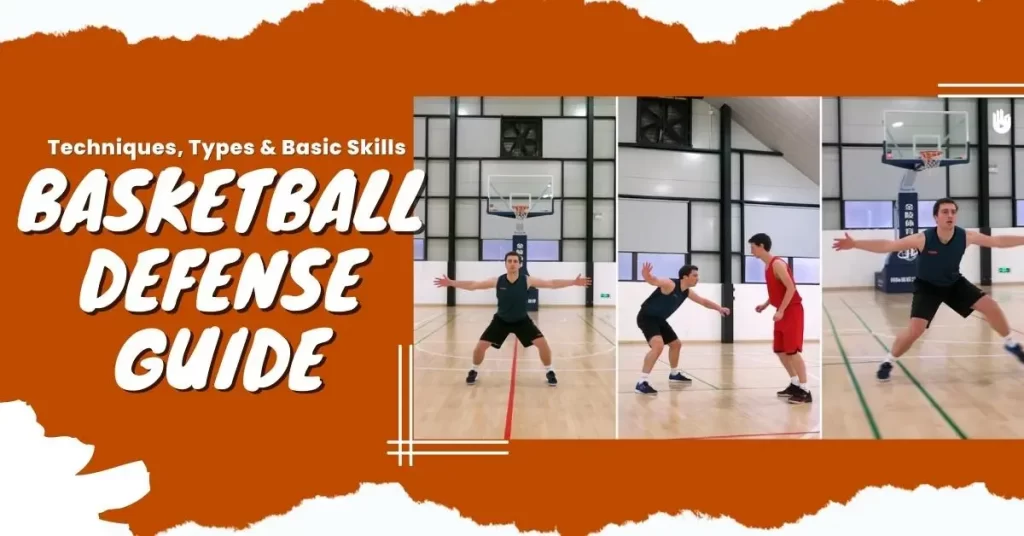
What Is Defense in Basketball?
“Defense” refers to the foundational strategy of basketball whose fundamental concept is to prevent/limit the opponent team from scoring points by making buckets and shots from the perimeter. A good defense may be defined as ‘A collective team approach that exhibits the defensive behavior, by positioning, aligning, efficient footwork and imposing the defensive philosophy to fend off and restrict the offense from scoring.
The individual effort put in defense by a player to stifle the score by blocking the shots, grabbing the offensive rebounds, forcing turnovers, and stealing the ball is integral trump to potential success, besides, the team defense approach, not only eliminates the ‘1-1 isolations play’, yet in fact, a sounder solution to eradicate the ‘player mismatches’ that may sometimes result in ‘Fouling’ leading to free throws.
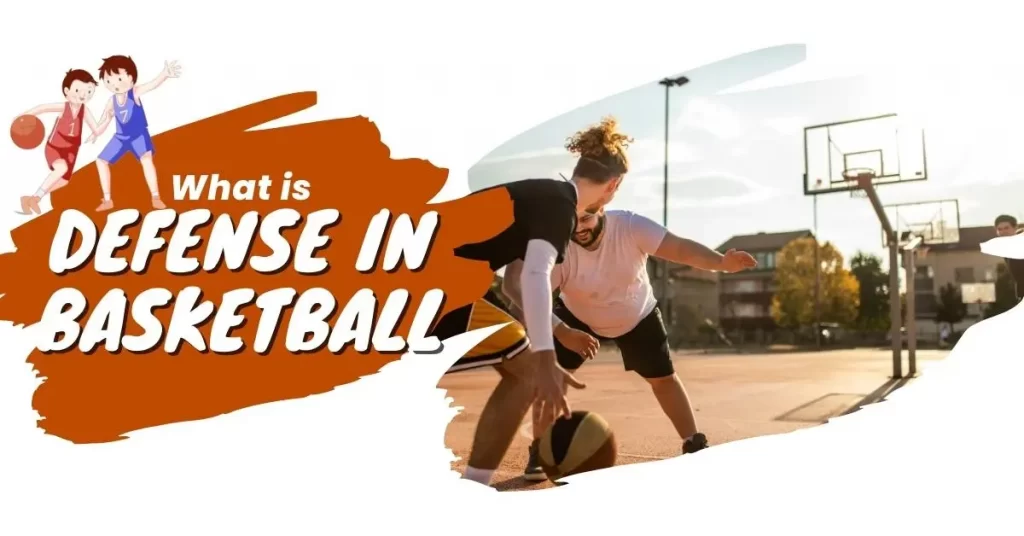
Ideally, a turnover secure by defense leads to a defensive possession and a full-court fast break is run by the team to set up a quick pull-up three-point shot. The coaches tend to hire their best defender, in a ball-handling position that is often the highest scorer in the lineup, to close out the offensive team’s point guard. Although the offense has the advantage over the defense in several ways, however, the “Disruptive Pressure Defense” may neutralize this advantage, by crippling their ability to score by executing numerous smart defense schemes and sound strategies. The most primary elemental principles to intercept the offensive scoring is to hinder dribble penetration and protect the basket.
Hinder Dribble Penetration:
Primarily, the offense’s strategic goal is to disintegrate the defense to leverage the space created as the consequence. The smart tactic of the offense to take advantage of this gap is by utilizing dribble penetration, particularly towards the court middle.
Hence, the demand for limiting/stopping the dribble penetration primarily needs to be solutionized by the defensive team, especially toward the middle of the court.

Essentially, to achieve the eradication of dribble penetration, multiple defensive techniques like jumping at the ball or stunting at the ball can be considered. Besides, other defense strategies like Defensive stance and Defensive slides may mitigate the dribble penetration.
Protect the Basket:
Protecting the basket at all times in basketball is the foundational key element to the potential win. Ideally, regardless of the defensive strategy active at the play, there should be always an on-ball/off-ball defender near the basket, preventing the offensive team to shot successfully and easy scoring.
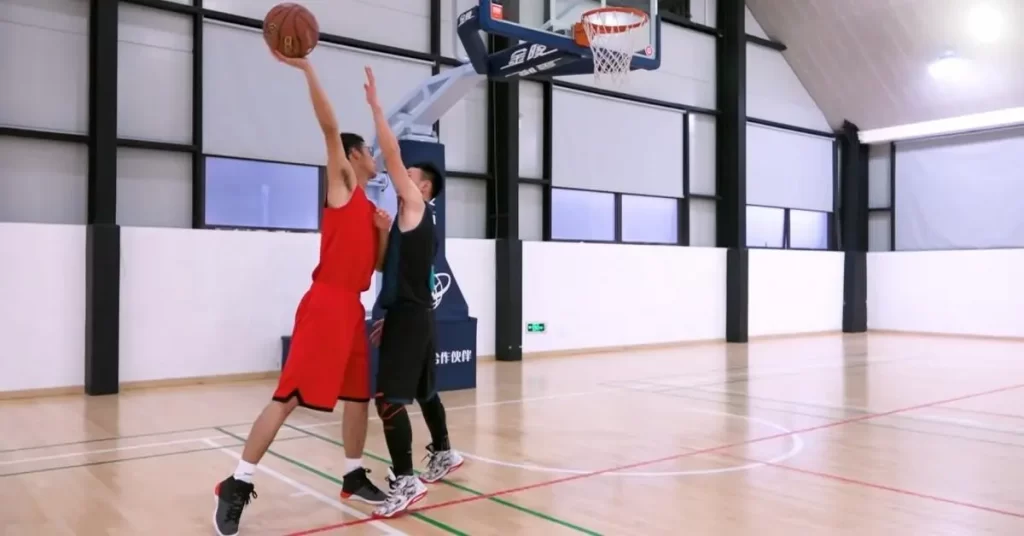
In the absence of defensive resistance near the basket, not only does the ball passing to either teammate near the rim become convenient, but also the maximum execution of dribble penetration toward the basket gets opportunely and as an upshot, the offense can play easy layups/dunks leading to ultimate shots percentage. Notedly, the defenders near the rim are usually the best-rim protectors and the tallest ones are preferred, however, this may overshadow in the scenario of “Transition Defense”.
Transition Defense:
Teams constantly switch from offense to defense in basketball depending upon the possession of the ball. The team with ball possession is considered to be the offensive team and on the flip side, another one is now the Defense team.
Team transitions take place as the outcome of missed shots, live-ball turnovers, after scoring, and changes of possession. A good transition defense demands the quick footwork of the team’s players(previously the offender) near the backcourt to promptly move to protect the basket and the point guard, as soon as the opponent has its hands on the ball. This will limit the offensive’s ability to efficiently utilize their transition offense, especially the primary break offensive actions.
What Are Basketball Defense Techniques? Basic Skills of Basketball Defense
Basketball defense techniques are the strategies the players exhibit when on defense, whose main objective is to implement challenging defense by blocking offensive shots, stealing passes, grabbing rebounds, getting turnovers, and preventing the offense drive to the basket.
Recommended to read: Become Better Rebounder Tips
Defensive skills involve numerous abilities comprising a player’s general strength, physical attributes, quickness, body control, and overall stability. Henceforth, the efficient usage of these skills collectively acts as a vital strategic key to a strong defense. The following basketball techniques are building blocks to improve the ‘defense‘.
1. Defensive Stance
Preliminary, it is the first step to understanding the defense. The approach to a defensive stance in a stationary manner is essential to be learned properly, afterward the motion defensive stance and adding several movements to it make it more profitable.
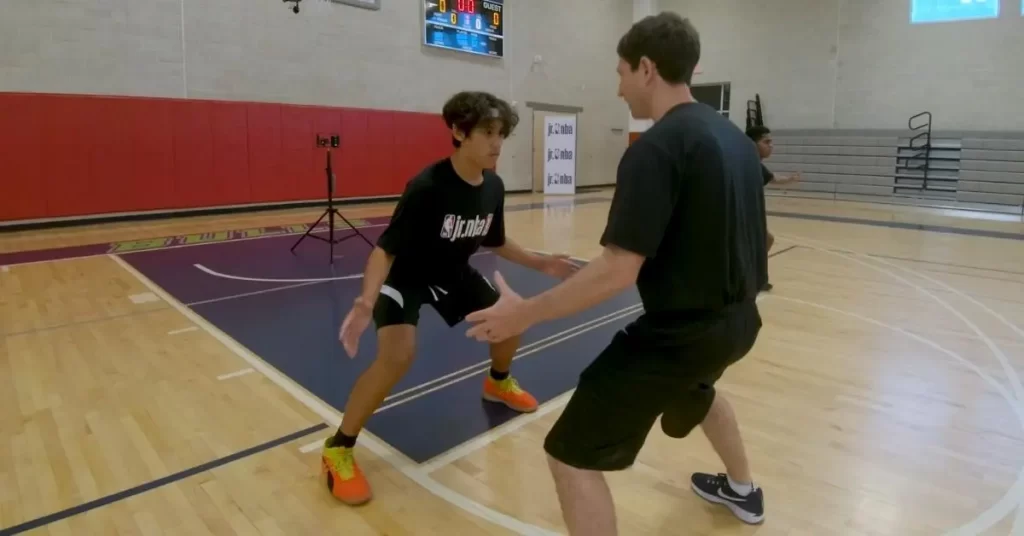
Understanding Proper Defensive Stance:
1. To get into a defensive stance, keep the feet slightly wider than shoulder-width apart – for effortless lateral movement.
2. Knees bent for balanced body control.
3. Butt down, chest upright towards an opponent – for your body to be in a medium stance so the center of gravity stays relatively low – as a low stance is quicker and hence stable.
4. Hands actively up, approximately out of shoulder height – to restrict/prevent passing and shooting. The straightness of the arm with full extension, or with the slightly bent elbow, depends upon the defensive strategy being considered.
5. Slide, not cross step, in the direction of your opponent with the distance of arm’s length from your opponent, to ensure a quick reaction as fast as your opponent.
On-Ball Defensive Stance:
When the defender guards and resists the offensive player with the possession of the ball, with a certain amount of defensive pressure, the tactic is said to be ‘On-ball defense‘.
In the scenario, when the offensive player with the ball possession near the perimeter doesn’t dribble while passing the ball to another teammate or reaching to the hoop, the defender can mirror the ball with his hands. That is, the defender can play an ‘On-ball defensive stance’ to deflect the ball by equally taking his hands high to the height of the ball that is held in the hands of the offender nearly high to his chest or along the shoulder.
In contrast, if the offensive player is in the triple threat position, that is possessing the ball low near/below the waist area and also he is a good perimeter shooter, the defender, in this case, can stop/least the dribble penetration by executing the defensive stance by bringing one hand closer to the defender’s face while other beneath from the ball, preventing any feasible dribble chances.
2. Defensive Slide
Leveling up the defensive techniques is the demand, however, the emphasis on the fundamentals shouldn’t be taken for granted.
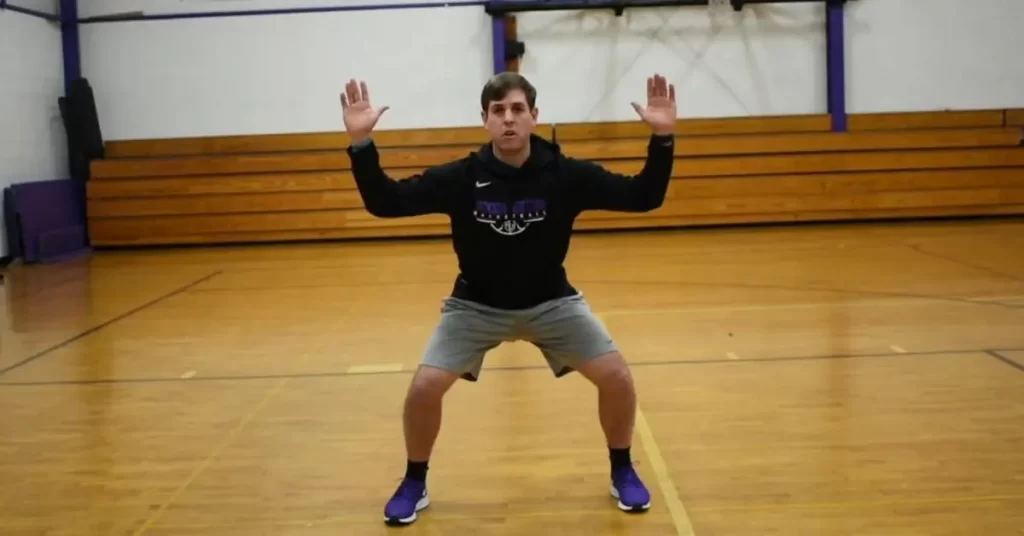
Understanding Proper Defensive Slide:
1. To execute the defensive slide, the correct execution of the defensive stance is preliminary.
2. To ensure the eradication of cross-stepping, the defender must locomote their feet, laterally from side to side with one foot leading the other. E.g, if the defender tends to go right on the court, he should move with the right foot leading first followed by the left foot thereafter, and vice versa.
3. Maintain the gap between the feet less gap may consequence in reduce lateral quickness.
4. Avoid feet crossover for effective slide laterally and maintain balance.
A sprint to an offensive player by the defensive player is the closeout. Normally the defender takes small rapid steps, to come closer to the offenders trying to balance them off while keeping the hands up and always ready to restrict the passes and shots by the offensive players.
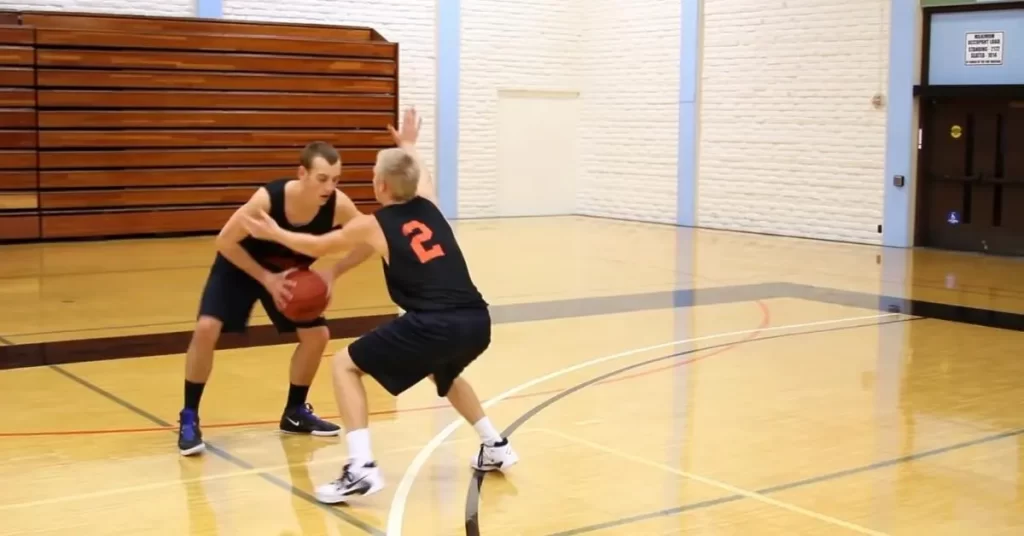
4. Box Out in Basketball
The box out is said to be enforced when the defender gets in between the basketball/basket and the offensive player being guarded. The scheme may be efficiently utilized by using your low center of gravity to push the opponent in the backward direction and make the rebound hard for them to get. Box out, is practiced by both offenders and defenders, yet is favorable to practice as a defender.

What Are Common Types of Basketball Defense? Common Defensive Strategies
While defensive strategies comprise numerous techniques to be implemented, besides, they primarily fall into 4 types depending upon their usage and utilization perimeter. All come with certain weaknesses and strengths, however, if implemented efficiently all can lead to a potential win.
The four 4 types include Man-to-Man defense, Zone defense, Combination defense, and Press defense.
1. Man-To-Man Defense
When playing man-to-man, the goal of the defender is to follow, guard and defend the particular assigned offender to him. Essentially, the defender is assigned the responsibility to guard their corresponding opponent based on the matched attributes both may share such as dexterity, position, athleticism, and role.
Normally each player is lined-up to defend another with the related role, that is, Defensive PG(Point Guard) defends Offensive PG, Defensive SG(Shooting Guard) defends Offesinve SG, and so forth. However, in case, a defender is once exploited due to any of his weaknesses identified by the offender, it may result in the coach’s revised assigning positions. Moreover, to abandon the offensive’s best player, the defense may double-up the team to defend him.
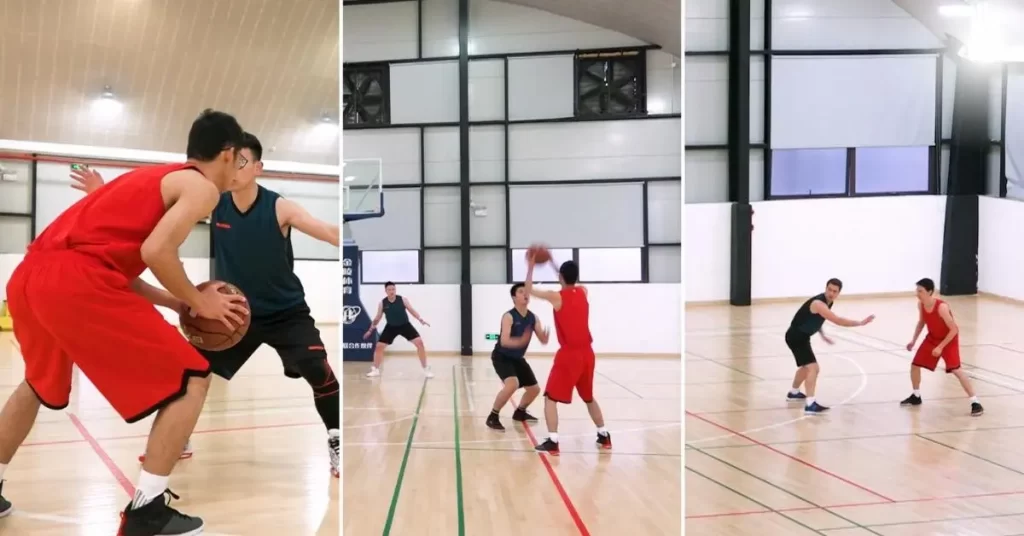
Also called “person-to-person” defense, the execution of the strategy may be comprehended in two different ways, including “tight man-to-man” and “loose man-to-man” defense.
The “tight man-to-man” works on the notion of aggressively guarding the opponent ending up with “little-to-no space” left in between. This restricts the offender from easy dribbling and playing shots.
Next, the “loose man-to-man” (or “sagging” man-to-man) contrast the idea of “close range guarding”, by ensuring maintaining quite a little distance between the defender and the offender/ball. The separation and gap in between, allow the defender to prevent the penetration more competently. Also, it works well against weaker outside shooters and players with a professional drive toward the basket.
“Until you can run man-to-man coverage, as well as understand its principles, you can’t really execute other defensive schemes efficiently,” says Rivers. “If you want to play at the next level, you’re going to have to learn how to play man-to-man.” He states too, “You can also hedge screens.”
When playing man defense, the grip over defending against screens and cuts is essentially needed. The implementation of man-to-man defense is beneficial when the offensive teams tend to score from the perimeter, particularly with 3-point jump shots. This defense comes up with the scheme to trap the offender in the restricted area on the court, by forcing them towards the sidelines and baselines. Additionally, collecting the rebound and ‘boxing out’ in the paint gets easier with this defense.
However, the Man-to-Man defense may get in disfavor, if the defensive team has players with low lateral quickness or ideal ability needed.
2. Zone Defense
Where man-to-man defense involves assigning a particular player to defend, on the contrary, the zone defense has you guarding a designated area instead. Each player is assigned a particular area of the court to guard. The basic concept that applies in a zone defense scheme is that defenders pick up the opponents to guard/defend as soon as they enter their designated area. Once they leave or move to another section of the court, the defender persists in their assigned area and guards their spot rather than following up on the opponents, as they would in man-to-man.
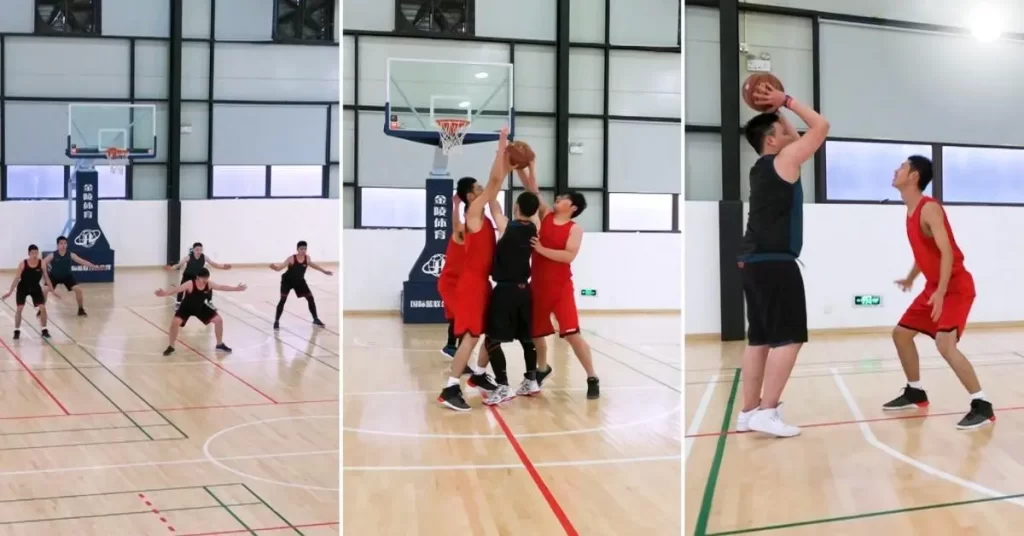
The primary purpose of zone defense is to deliver an effective play against the poor outside shooter, as well as restricting the scoring opportunities, especially against the players who are adept at driving to the basket.
In a zone defense, the players can be assigned any area on the court, the central zones include the top-of-the-key, corners, near the 3-point line, and midcourt line. Various types of zone coverages exist, depending on the alignment of the players, and are usually labeled by numbers where the foremost number refers to the closet player near the top of the key and the end number refers to the player under the hoop(i.e closet to the baseline). Common zone layouts comprise:
2-3 Zone Defense:
The 2-3 Zone Defense is the most commonly used strategy in the zone defense scheme. The layout exhibits where 2-defenders stand at the free throw line while 3 guard the baseline.
This zone defense, not only intercepts contested perimeter jump shots but also expeditiously secures rebounds, decreases scoring opportunities from low-post areas, and guards the baseline & corner attacks.
3-2 Zone Defense:
The alignment in this zone scheme places 3-defenders straightly in-line at the free throw line and the remaining 2 in the back, allowing more pressure from the wings, preventing a long-range shot, and limiting the dribble with on-ball defense.
1-3-1 Zone Defense:
The 1-3-1 zone defense exibits the structured layout, being 1-player above the free throw line, 3-players wobbling across the paint, and 1-player guarding the baseline beneath the hoop. The technique is executed to ward off the head-on attacks at the top of the circle by applying pressure on the outside arc and winning the turnovers by trapping the offenses into corners.
2-1-2 Zone Defense:
Assembled in 2-1-2 zone defense constitutes the arrangement in a way that, 2 players fend the free throw line, 1 is positioned in the lane, and the last 2 reside at the baseline to guard.
This defense works best to halt the offense activity into the paint and block the baseline attacks.
1-2-2 Zone Defense:
In 1-2-2 zone defense (termed as “jug” defense), 1 player shields above the foul line while 2 players defend the wings, and the baseline is guarded by the left 2-defenders. The technique is effective to put pressure on the ball on the outside arc and advantageous for trapping out too. However, this may consequence of the empty high post, midcourt paint, and corners open.
Match-up Zone Defense:
Also known as “amoeba defense”, is ideally the reaction to the offense’s attack. Match-up is usually initiated by executing 2-3 or 1-3-1 defensive strategies, however, the alignment is revised depending upon the offense layout. Potential corner traps and turnovers can be won by this technique. Restricting entry passes into the low/high areas can also be achieved by this defensive strategy.
3. Combination Defense
Also called “Junk defense” or “Hybrid defense“, is the combination of attributes of both ‘man-to-man defense’ and ‘zone defense’ strategy.
As stated by Rivers, the combination defense can be “used when you are at the point in the game where you want to change momentum, start forcing turnovers, etc. You use these defenses when you have defenders that understand man-to-man principles very well and are quick enough to get back if and when something breaks down in coverage.”
This defense strategy is not the favorite by most coaches because of its complexity which may end up in the breakdown of team coverage. However, chose to be implemented when the momentum of the team feels to be changed and to confuse the opponent in the middle of the game at times. Various traditional combination defense schemes include:
Box & One:
This implements the man-to-man in a way, that 1 defense player is corresponded to guard the offense hot hand player/best player while the rest defensive team exhibits the phenomena of zone defense by hanging on to the ‘paint’ particularly and guarding that zone specifically. We have prepare a separate article on different types of basketball transition you can read also.
Diamond & One:
Similar to the box & one principle, yet contras on the basis of the alignment of the defenders where instead of a box with two players at the free throw line and two on the baseline, the shape reforms to a diamond with 1 defender at the foul line and baseline, respectively.
Triangle & Two:
In a scenario, while the offense has two-star players on the team, the triangle & two is implemented by assigning 2 players to match up man-to-man with the responding two offense star players, while the remaining 3 defenders form a triangle in the paint to prevent the penetration.
Press Defense:
Press defense is encouraged to enforce when the defense wants quick turnovers by setting the traps. The strategy revolved around putting pressure on the offense either in the half-court or full-court. Its main objective is to get the quicker ball back by keeping the offense under constant pressure. The ‘full court-press and ‘half-court press’ terminologies define at what either area of the court the dribbler is being pressurized under the execution of Press defense.
Half-Court Press Defense:
Half court press is executed as sson as the offense begin to dribble or swarm the ball over the half-court line a. The poor play by the offense in the scenrio leads to turnovers,steals, easy points and lay-ups in transition. The defense’s prime goal in half-court press is to fatigue the offense, and disrupt the game’s flow. However the downside of of it is, that it may leave the basket area and the key area overlooked because all of your defenders are usually on the offensive half of the court (known as the frontcourt).
Full-Court Press Defense:
Full-court press defense involves the basic principles of the half-court press defends while extending the action the entire length of the floor, beginning with initial inbound pass (also termed as throw-in). The pressure executed in full-court defense usually maximizes the chances of steals, deflections and in gaining the turnovers. The benefit of full-court to the defensive team is that it gives twice as much room to force possible turnovers, however the flip side is, its riskier to implement than half-court press as it leaves the defense even more vulnerable to a long, well-placed pass.
Conclusion
Now that you understand thoroughly the defense in basketball and knowledgeably basketball defense types, techniques, basic strategies, and skills, you should now consider practically practicing these tweaks to shut down your opponent team and boost up the overall grip over the multiple defensive techniques mentioned above to play like a PRO.
Remember the change in your plans and positioning is the key overall to constantly ditch your opposing team and preventing them from adapting your methodology and styles. Remember the tips, and play smart.